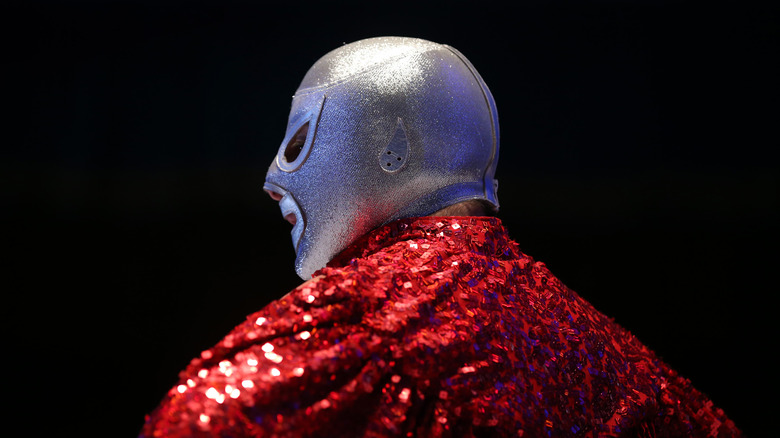Thanks to the cult following of Lucha Underground, streaming and YouTube opening up new avenues of viewership, WWE’s purchase of AAA, and the working relationship between AEW and CMLL, more fans have been exposed to lucha libre, and the luchadors and luchadoras that make it so special, than ever before. There is still a learning curve, however, about certain lucha libre traditions, particularly the importance of the mask. Though it didn’t occur immediately after Salvador Lutteroth founded CMLL (then EMLL), in 1933, masked wrestlers became popular in Mexico soon after the debut of American wrestler Corbin Massey as La Maravilla Enmascarada in 1934, and grew even bigger thanks to the likes of El Murciélago Enmascarado (The Masked Bat), one of the first Mexican wrestlers to don the mask and the first to ever lose on in an apuesta (bet) match in 1940.
But for many fans of lucha libre, the importance of the mask was established by the man most consider to be the biggest wrestling star Mexico has ever seen; El Santo. Even if you have no knowledge of lucha libre, there’s a decent chance you have some understanding of El Santo, whether via his reputation as one of the biggest draws in wrestling history, his appearance in films such as “Santo vs. The Vampire Women,” which was later shown on “Mystery Science Theater 3000,” or references to him in the smash hit Disney animated film “Coco.” Some may be aware of his son, El Hijo del Santo, a big star in lucha libre in his own right. And most hardcore lucha fans will recognize Santo as the inspiration for CMLL’s annual Leyenda de Plata tournament. But all of that does little to sum up Santo, who in the course of a 40 year career under a silver mask didn’t just become a lucha/movie star; he became an icon, a folk hero, and in some ways almost a mythical figure, despite being real.
Lucha Libre Legend El Santo Unmasked In His Last Public Appearance
And through it all, he established the importance of the mask, not just through performance, but from never taking it off. Ironically enough, Santo spent the bulk of the first 8 years of his wrestling career unmasked, first under the names Rudy Guzmán, an abbreviated version of his real name, Rodolfo Guzmán Huerta, and Hombre Rojo, among other personas. Once he became El Santo, however, the mask stayed on. Santo was so committed to protecting his identity that he even arranged special traveling accommodations with Mexican and United States customs agents, in order to prevent fans, media, and even people he worked with from seeing him unmasked. Rumors even persist that Santo would remain masked in private functions, though it seems reasonable to believe he took the mask off at home. But aside from that, the mask never left Santo’s side, not even when he wrestled in his retirement match on September 12, 1982.
Things changed, however, during a January 1984 appearance on the Mexican program “Contrapunto,” where Santo stunned the audience and fellow lucha libre legend Blue Demon by lifting his mask off and exposing his face. It remains one of the most shocking moments in the history of lucha libre, and also one of the most tragic, as it would turn out to be the last public appearance Santo would ever make. Only a week later, Santo passed away at 67 years old following a heart attack, effectively making his unmasking on “Contrapunto” a goodbye. The country was left in mourning, exemplified by Santo’s funeral in Mexico City, which some claim had over 10,000 people in attendance. As he was laid to rest, Santo did so with his silver mask on, a tradition that has since continued for luchadors that pass away, including Blue Demon. Santo’s burial with the mask on, and his public unmasking to say goodbye, have only added to the enduring legacy of El Santo, and his impact on lucha libre.

